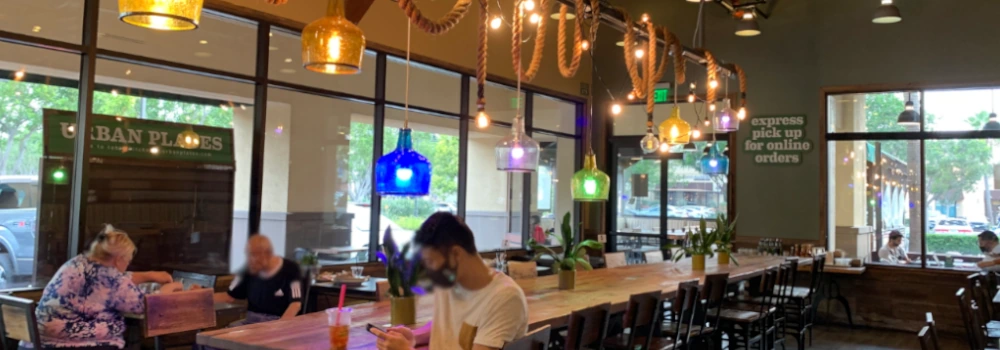
In a busy kitchen, “we’ll get to it later” can quietly turn into “we never get to it.” That’s how small oversights in cleaning and maintenance can grow into health-code violations, equipment failures, or, in the worst cases, closures.
According to the CDC, about 800 foodborne outbreaks are reported each year, and most of them happen in restaurants. When you combine that risk with staffing shortages and rising guest expectations, a smart, realistic BOH cleaning program shifts from a “nice to have” to a strategic necessity.
In our back-of-house episode of The Restaurant Roadmap podcast (Kitchen Operations Part Two), Synergy managing partner Danny Bendas and senior kitchen consultant Eric Lauer highlighted some very real, very fixable blind spots they see in kitchens every week. This checklist focuses on the high-risk tasks teams most often skip—and how to incorporate them into your routines.
1. The Dish Area: Backbone of the Operation
Dishwashers are often the least appreciated people in the building, but they manage the flow of the entire operation.
Danny frequently reminds operators: if the dish area is overwhelmed, everything else falls apart. In the episode, he joked that after a 13-hour day, getting sprayed with dirty water was his breaking point—but the real lesson was about respect and setup.
Make these items non-negotiable:
- First, set up the dish area: racks, sprayer, chemicals, mats, and a clear landing zone ready before prep begins.
- Stage, don’t dump: lightly soiled pans and utensils should be racked and run, not left in a pile for the dishwasher to handle.
- End-of-night reset: the dish area must be spotless, organized, and ready for the opener, not just “good enough.”
As Eric put it, the way leaders treat the dish station teaches everyone how important that role really is.
2. Ice Machines and Beverage Systems: The Invisible Risk
You can have spotless line coolers and still fail an inspection—workhorse: the ice machine.
Danny shared a story about walking into a restaurant and seeing someone literally climb out of the ice bin while cleaning it—proof of how rare that task can be. Ice comes into contact with drinks, food, and guests’ mouths, so a dirty bin becomes a direct food-safety issue.
Add these to your routine:
- Daily: sanitize ice scoops; wipe the exterior surfaces of the ice machine and soda system; do not store anything in the bin.
- Weekly: clean and sanitize drip trays and surrounding walls; confirm the bin interior is free of slime and buildup.
- Monthly or per manufacturer: thoroughly clean and sanitize the ice machine (including filters) and log it with the manager's signature.
Train your team to see ice as food, not storage. That mindset alone will change how they handle the equipment.
3. The Grease Triangle: Fryers, Hoods, and Floors
Grease buildup isn’t just gross—it’s a fire hazard and a compliance problem. NFPA-based reports on restaurant fires estimate that commercial kitchen fires cause tens of millions of dollars in damage each year, mainly due to cooking equipment and poor maintenance. You don’t want to be part of that statistic.
Eric is blunt: filtering and cleaning fryers are among the first things to slip when you get busy. To stay ahead, build a “grease triangle” into your checklist:
• Fryers
- Filter oil regularly at a consistent schedule based on volume—usually daily in high-volume operations.
- Schedule regular boil-outs (weekly or bi-weekly).
- Pull the fryers forward (when possible) and clean underneath and behind them.
• Hood and filters
- Wipe down exposed hood surfaces and surrounding stainless steel nightly.
- Keep professional hood and duct cleaning on a firm schedule that aligns with your volume and local code requirements.
• Floors and drains
- Degrease the floors around fryers and grills every night.
- Flush floor drains using suitable cleaning solutions to prevent clogs and odors.
Eric’s practical tip: assign one deep-clean item per night—Monday the fryers, Tuesday the grill, Wednesday the salamander, etc.—so “we forgot” is no longer an excuse.
4. Health-Inspection Mindset: Weekly Self-Audits, Not Panic
Many teams only think about the health inspector when they walk in the door. That’s when stress spikes, cooks freeze, and leaders scramble.
Instead, treat your local inspection form as a weekly training tool:
- Perform a weekly mini health inspection using your local jurisdiction’s form.
- Rotate through various shifts and stations so everyone gains exposure.
- Walk the line, walk-in, dry storage, dish area, and restrooms together.
- Explain why each violation matters—temps, cross-contamination, hand-washing, chemical storage—not just “because the inspector says so.”
In the podcast, Eric described “health-inspector fire drills.” When an inspector arrived, each team member had a specific role: one checked hot-hold temperatures, another checked cold-hold and labels, and another inspected the walk-in and dish machine. Because they practiced, inspections became quicker and less stressful—and inspectors appreciated the discipline.
5. Pest Prevention: Start at the Back Dock
Pests are a reputation killer, and in many cities, inspection reports and closure notices are public. Amanda mentioned a local chain location that suffered repeated pest violations and eventually closed permanently. Guests talk; those stories spread faster than your best review.
Prevention starts outside the building:
- Back dock: scrub and degrease weekly; keep trash, crates, and grease bins organized and away from doors.
- Key-drop deliveries: limit how long the back door stays propped open; make sure lighting and door sweeps are properly maintained.
- Barriers: install and maintain door sweeps, weather stripping, and, where appropriate, air curtains and UV insect devices.
Inside, your cleaning program is your first line of defense:
- Break down cardboard promptly; avoid storing it against walls or on the floor.
- Remove food from the floors at the end of the night and store everything sealed, labeled, and elevated off the ground.
- Walk your pest control provider through the kitchen, listen to their recommendations, and actually fix what they identify (gaps, broken tile, harborages).
6. Close-to-Open Systems: Making Mornings Easier
Every operator knows the frustration of an opening line cook wasting 45 minutes searching for ladles, scoops, and tongs. That’s lost time and instant frustration.
Eric’s close-to-open system is simple and effective:
- Each station has a color-coded hotel pan with all the tools needed for the next shift.
- At close, the cook must return every spatula, ladle, squeeze bottle, and tong to that pan.
- The pan stays on the station, so the opener just pulls it and sets the line.
Danny adds that your line check can serve as a closing tool: mark the items that must be fully stocked before leaving, so that “done” is clearly defined.
Done right, close-to-open:
- Reduces opening labor costs
- Cuts conflict between day and night shifts
- Provides guests with a more consistent experience across all dayparts.
Keep Learning: Watch the Full BOH Episode
This checklist only scratches the surface of the systems Danny and Eric discussed on the back-of-house episode of The Restaurant Roadmap podcast. If you want more on pre-shift meetings, expediting, labor planning, cleaning schedules, and close-to-open systems, watch the full BOH episode on YouTube or listen on Spotify or Apple Podcasts.
If you’d like help building realistic, sustainable BOH systems for your concept, Synergy Restaurant Consultants brings over 35 years of hands-on experience to every project. Visit https://synergyconsultants.com to learn more.
.png)





.png)





